#microbial metabolism
Explore tagged Tumblr posts
Text
youtube
#Colorectal cancer#gut microbiota#intestinal microbiome#arginine catabolism#cancer metabolism#tumor microenvironment#nitric oxide#polyamine metabolism#immune modulation#microbial dysbiosis#cancer progression#host-microbiota interaction#inflammation#metabolic pathways#gut bacteria#microbiome therapy#cancer biomarkers#oncology research#microbial metabolism#precision medicine.#Youtube
0 notes
Text
PURE AMBRETTE SEED ESSENTIAL OIL
It can help cure a severe neurological illness known as hysteria or epilepsy. When the smell of this oil is breathed, it calms brain cells and suppresses epileptic seizures. It can also be used as an effective appetizer. It improves digestion and has a great effect on metabolism. When breathed, it promotes optimal metabolic activity. Organic Ambrette Seed Essential Oil includes ambrettolide, a powerful painkiller that aids in the relief of stomach aches. It contains potent anti-inflammatory and antioxidant effects. It also possesses anti-proliferative properties. Ambrettolide, an active component in ambrette seed oil, is useful in decreasing inflammation in the trachea and bronchi. It enhances sensuality and depth by adding clean, warm tones.

#metabolism#joint inflammation#usda certified#essential oil#anti inflammatory#microorganisms#skin allergies#anti microbial
0 notes
Text
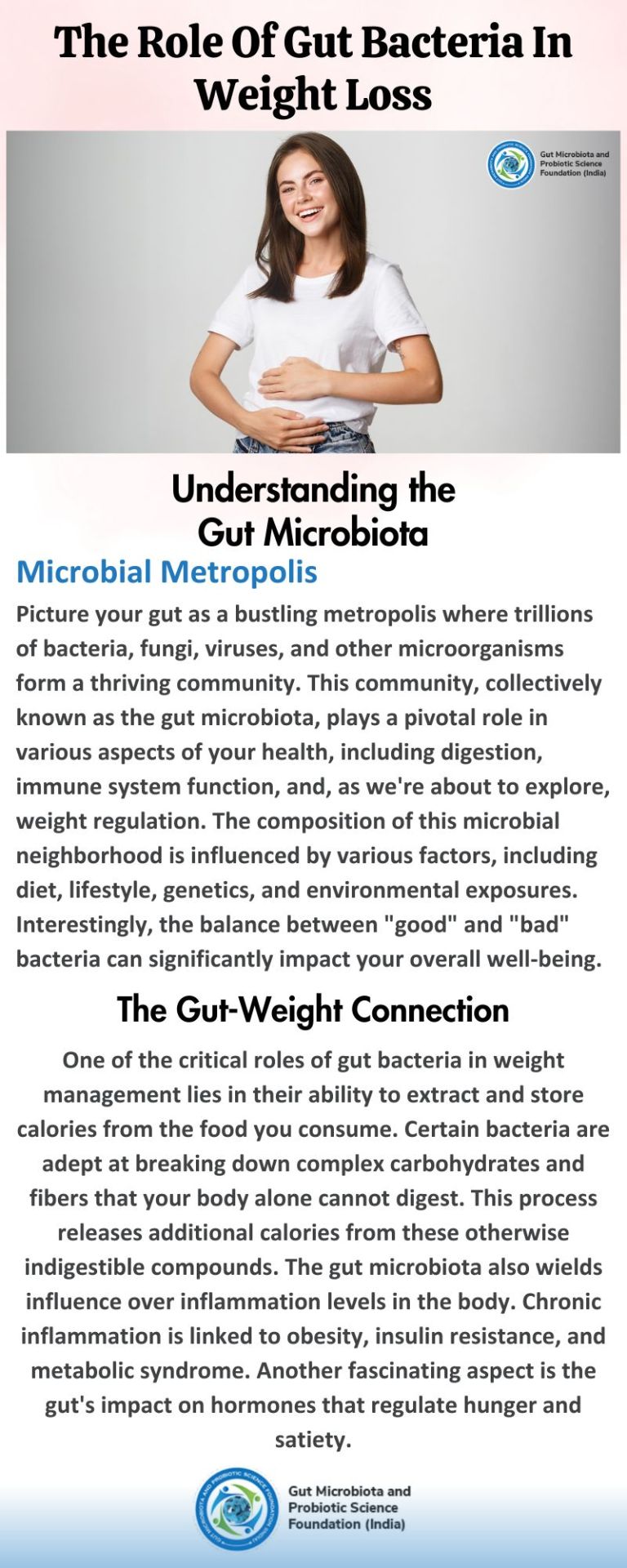
The Role Of Gut Bacteria In Weight Loss: All You Need to Know
Explore the intricate connection between gut bacteria and weight loss in our latest blog post. Delve into the fascinating world of the microbiome and discover how the trillions of microbes residing in your gut can influence your body weight. Uncover the latest research findings, practical tips, and insights into harnessing the power of a healthy gut for effective weight management.
#Gut bacteria#Microbiome#Weight loss#Gut health#Probiotics#Digestive system#Healthy lifestyle#Weight management#Metabolism#Microbial balance#gutfoundation
0 notes
Text
AAAGGGH i should have majored in microbio but i will utilize my biochem degree to work in microbio EVENTUALLY
#personal#currently thinking i wanna work with elucidating microbial biosynthetic pathways or microbial metabolism thingys#so excited#jumps around#also rlly like archaea but that’s like later phd if i end up doing a phd#i don’t know a lot abt it yet but it’s just 💥💥💥💥💥 RAAAAGH so exciting#i heart stem
0 notes
Text
Waterfalls! These gorgeous, powerful features of nature have been oddly lacking in my past lists, I think in part because their danger has always seemed more “obvious” to me. But doing the research for this list has reawakened my phobia of the water. Some of the later entries (numbers 9 and 10 especially) brought back anxieties that I thought I had gotten over long ago, but it was kind of thrilling. Like watching a particularly scary horror movie. Let’s get into it!
1. Underwater Waterfall, Mauritius
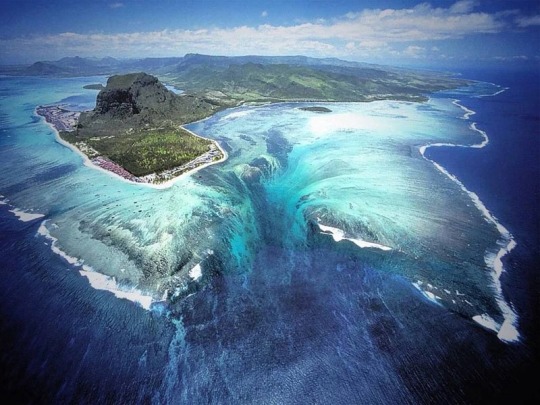
No, it’s not really a waterfall. It’s just an optical illusion caused by sand falling off the island’s slope down into the deeper water below. But it looks cool and scary, and the drop-off is 2.5 miles deep so that’s pretty impressive and I think it deserves at least a mention.
2. Blood Falls, Antarctica
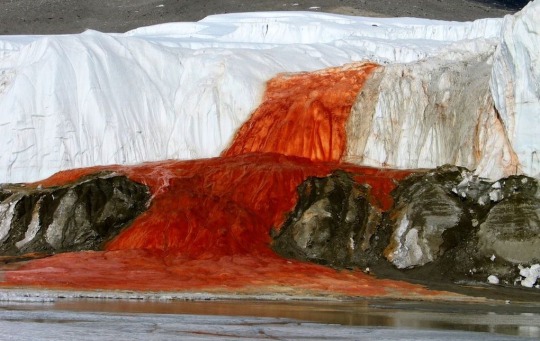
There’s nothing particularly dangerous about this one, it just looks incredibly creepy. Obviously, it’s not actually blood, it’s just water that’s very rich in iron. But the really fascinating part of this waterfall is that its source seems to be a subglacial lake that contains a unique microbial ecosystem which has been isolated for two million years! These microbes are like nothing else we’ve ever observed in nature before. They live in an incredibly cold and extremely saline lake, and metabolize sulfur and iron ions with no oxygen present. They are being used as a model to study what life on ice-covered alien planets could be like.
3. Khone Falls, Laos

This waterfall is not nearly as famous as some of the others on this list, which is surprising because it’s the widest waterfall in the world, with an average width of six miles! Although not particularly tall, it is the second most powerful waterfall in the world, more than double the power of Niagara Falls! The Khone falls divide the Upper and Lower Mekong river, making travel by boat between the north and south impossible. What makes it kind of unsettling to me is that during the rainy seasons the falls are basically swallowed up by the river, turning them from a spectacular waterfall to a series of massive rapids.
4. Huntington Gorge, Vermont
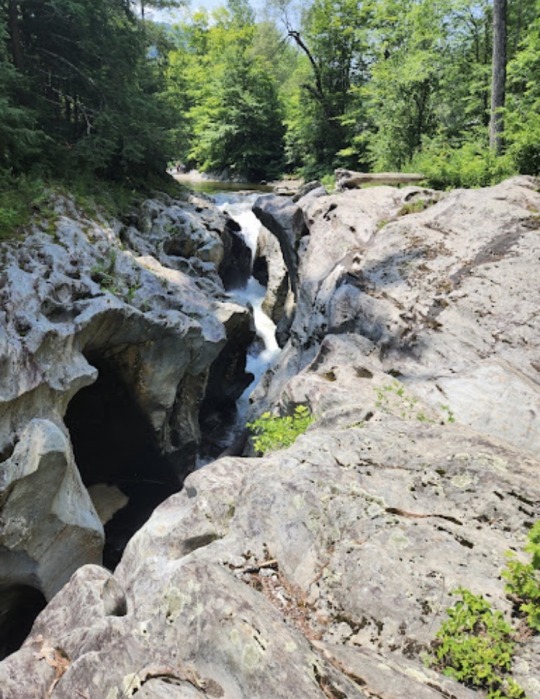
When water levels are low, this river is a popular and scenic swimming spot, and the canyon has an almost otherworldly quality with its unique bends and overhangs. Unfortunately, these very features are what makes it so dangerous. Much like the infamous Strid, the gorge is full of holes, steep drop-offs, and powerful currents hidden beneath the water, which can suck people in and trap them against the cliff walls. Over fifty people have died here since the 1950s, and many more have been injured. With proper precautions, one can safely explore the gorge and swim in the river, but don’t forget that this water has swallowed up many people before you.
5. Victoria Falls, Zambia

I’m sure most of you already know about Mosi-oa-Tunya, more widely called Victoria Falls, as the largest waterfall in the world. Formed as the Zambezi river pours into a series of massive gorges, this curtain of water spans nearly a mile and falls 300 feet with such force that columns of rising spray can be seen for miles around. Despite this, the pools around the lip of the falls can be relatively tame, and locals have fished while balancing on the edge of the cliff for generations. The safest and most famous of these fishing holes is the Devils Pool, which allows you to literally swim right up to the edge of the world’s biggest waterfall. The pool is actually very safe when the correct precautions are taken, and I can only find one death attributed to the pool specifically, when a tour guide in 2009 fell while trying to help a man who had slipped and was dangling off the edge (and, honestly, I was expecting a lot more deaths given the amount of clickbait articles advertising it as the most deadly swimming hole in the world). Although that was the only death from the Devils Pool, there have been many other deaths at Victoria Falls, mostly tourists who underestimate the power of the river or get too close to the edge. So if you ever visit this spectacular waterfall, please observe it from a safe distance and follow all the rules.
6. Huka Falls, New Zealand
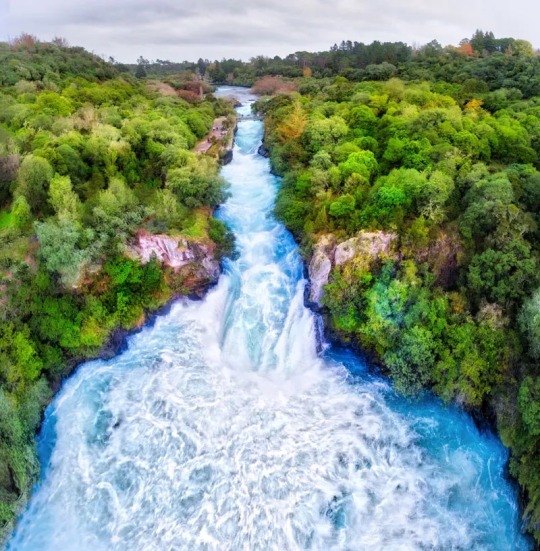
This is not a traditional waterfall, but rather a series of small waterfalls along a narrow stretch of the Waikato river, creating an incredibly turbulent chasm that ends in a whirlpool. The 300-foot wide river is funneled into a 50-foot wide stream, causing a torrent of water that flows at a rate of 58,000 gallons per second. Obviously, this is not an area that you should get in the water, but not everyone takes that advice. There have been multiple deaths at this waterfall, and a few narrow escapes, including two swimmers who, incredibly, survived after trying to raft down the falls on pool toys. Please, for the love of god, don’t do that.
7. Niagara Falls, US/Canada

These falls are the only place on this list that I’ve visited, and I can tell you they are certainly an incredible sight, but also rather intimidating due to their sheer size and power. These three massive waterfalls are fed by the Great Lakes and, combined, have nearly 700,000 gallons of water thundering down every second. There is also a permanent whirlpool in the river that has existed for over 4,000 years and reaches depths of 125 feet! Besides being huge and awe-inspiring, these waterfalls are known for their appeal to daredevils who have gone over the edge in barrels or, in one case, a giant rubber ball. But these famous success stories are punctuated with tragedy. Roughly 20-30 people die at Niagara Falls every year. Most of these, sadly, are suicides, but others are failed attempts to replicate the successful daredevils of the past, and others are accidental. An estimated 5,000 bodies were recovered at the bottom of the falls between 1850 and 2011.
8. Murchison Falls, Uganda
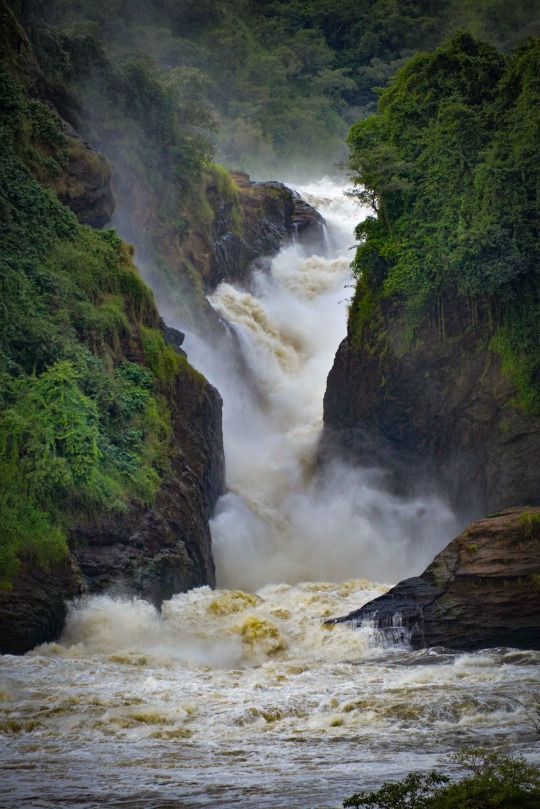
Also known as Kabalega Falls, this is the worlds most powerful waterfall. Formed as the Nile River flows from Lake Kyoga to Lake Albert, this waterfall is so strong it literally causes the ground to shake around it. Here, the Nile is constricted from a river nearly 400 ft wide to a passage only 20 ft wide, creating an incredibly turbulent and violent tunnel of water that tears its way into the pool below at 79,000 gallons per second. And this is no ordinary pool. Waiting below the falls is the highest concentration of large crocodiles observed anywhere in the world, waiting for any dead or stunned animals caught in the falls to wash into their lair. Although the waterfall and surrounding park are now a beautiful tourist attraction and wildlife refuge, the history of the falls includes tales of human and animal sacrifices, thrown in alive to appease the gods that some believed resided beneath the raging waters.
9. Bath Fountain, Jamaica
This is just a random little waterfall along a hiking trail, but the video triggered some intense bathophobia in me for the first time in a while. Like, I was scared to get in the shower after watching this. Proceed with caution:
youtube
10. Kipu Falls, Hawaii

This one scares me because, despite my research, I can’t actually figure out what the hell is happening here. Multiple people have died here; all tourists, all drownings, all of seemingly very unclear causes. Kipu Falls is a beautiful and popular swimming spot, and locals frequently dive off the top of the falls with seemingly no danger. However, five deaths over the course of five years from 2006-2011 challenged its reputation of being a safe swimming hole. All the articles I could find seem to repeat the same information; there is no current in the pool and the waterfalls are not especially powerful. Despite these established facts, all five deaths were the same. Someone jumped in, surfaced, and then were dragged back down to the bottom of the pool and held there until they died. This has resulted in a lot of speculation, including everything from a hidden whirlpool current to evil spirits. I’m just. Really unsettled by the lack of information on this one. Every article I found was published in 2011 and I couldn’t find any updates, which hopefully means people aren’t still dying here, but… what the fuck???? Was going on????? Sorry guys this one might not be as dangerous as some of the others but it freaks me out a lot so it’s getting a higher rating. I want to know what’s going on but I’m sure not going to investigate it myself.
671 notes
·
View notes
Text
Gram-positive vs. Gram-negative bacteria
a.k.a. the inspiration for this blog's icon
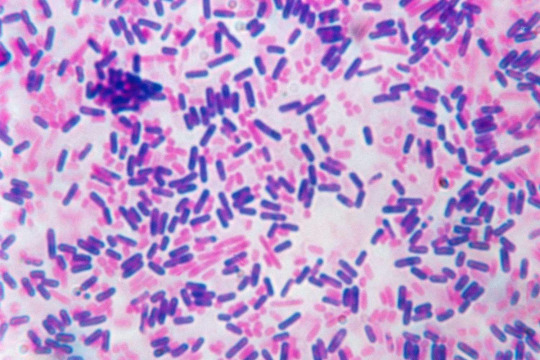
When researching your favorite species of bacteria, the first characteristic you're guaranteed to find is whether or not your bacteria is gram-positive or gram-negative. This is in reference to the Gram stain, a method of staining bacteria with dye, such that certain bacteria retain it and become purple (gram-positive), while others do not -- and after an alcohol wash, can be tinted pink with a counterstain (gram-negative). This staining procedure is almost always the first step in figuring out what kind of bacteria you're working with, and is used constantly for both clinical and research purposes.
Okay, but why? And why does the color of a dyed bacterium even matter?
The answer to these questions... lies in the structure of the cell wall. Gram-positive bacteria retain dye because their cell walls are much thicker. The typical gram-positive bacteria has one cell membrane, covered by a thick layer of peptidoglycan, which is a polysaccharide that gives structural strength to the cell. In contrast, the typical gram-negative bacteria has two cell membranes, separated by a thin layer of peptidoglycan: this layered structure is thinner and more flexible. Gram-negative bacteria can be counterstained because this outer membrane is porous, and is degraded by the alcohol wash, losing its ability to retain the original dye.

This difference in cell structure may not seem earth-shattering, but it does have some serious implications. For example, in medicine, you want to know if you're dealing with a gram-negative bacteria, because they are less susceptible to antibiotics that target the cell wall (such as penicillin): in essence, the outer membrane protects the cell. Penicillin can easily fit between the gaps in the peptidoglycan layer surrounding gram-positive cells, but not through the outer membrane of gram-negative cells, which selectively blocks the passage of toxic substances. In general, gram-negative bacteria are less vulnerable to environmental toxins.
Gram-positive bacteria have their own strengths. In fact, they have an extremely powerful tool at their disposal: unlike (almost all) gram-negative bacteria, some gram-positive bacteria are capable of forming endospores. Endospore formation is an intense survival mechanism where a bacterium creates a dormant structure inside itself (called an endospore), which is extremely durable but cannot self-replicate. When conditions have improved, the endospore transforms into a bacterium, and begins to metabolize and reproduce. Endospores can lie dormant for thousands -- and some argue, millions -- of years, and remain viable.
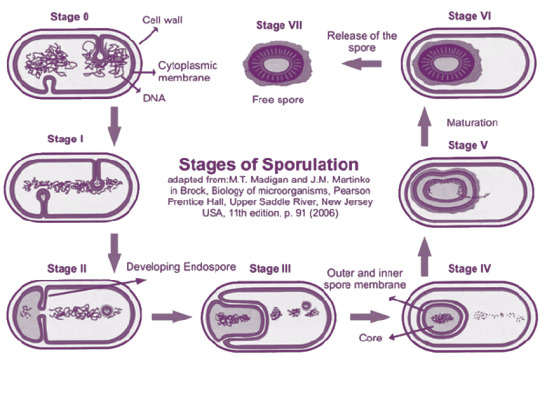
To summarize: what at first may seem like a simple question of microbial dye-jobs is actually a way to peer into the structure of a bacteria, and hopefully start to unravel the unique strategies and adaptations that the species employs for survival.
Happy Gram staining everyone!
268 notes
·
View notes
Text
Also preserved in our archive
By Vijay Kumar Malesu
In a recent pre-print study posted to bioRxiv*, a team of researchers investigated the predictive role of gut microbiome composition during acute Severe Acute Respiratory Syndrome Coronavirus 2 (SARS-CoV-2) infection in the development of Long Coronavirus Disease (Long COVID) (LC) and its association with clinical variables and symptom clusters.
Background LC affects 10–30% of non-hospitalized individuals infected with SARS-CoV-2, leading to significant morbidity, workforce loss, and an economic impact of $3.7 trillion in the United States (U.S.).
Symptoms span cardiovascular, gastrointestinal, cognitive, and neurological issues, resembling myalgic encephalomyelitis and other post-infectious syndromes. Proposed mechanisms include immune dysregulation, neuroinflammation, viral persistence, and coagulation abnormalities, with emerging evidence implicating the gut microbiome in LC pathogenesis.
Current studies focus on hospitalized patients, limiting generalizability to milder cases. Further research is needed to explore microbiome-driven predictors in outpatient populations, enabling targeted diagnostics and therapies for LC’s heterogeneous and complex presentation.
About the study The study was approved by the Mayo Clinic Institutional Review Board and recruited adults aged 18 years or older who underwent SARS-CoV-2 testing at Mayo Clinic locations in Minnesota, Florida, and Arizona from October 2020 to September 2021. Participants were identified through electronic health record (EHR) reviews filtered by SARS-CoV-2 testing schedules.
Eligible individuals were contacted via email, and informed consent was obtained. Of the 1,061 participants initially recruited, 242 were excluded due to incomplete data, failed sequencing, or other issues. The final cohort included 799 participants (380 SARS-CoV-2-positive and 419 SARS-CoV-2-negative), providing 947 stool samples.
Stool samples were collected at two-time points: weeks 0–2 and weeks 3–5 after testing. Samples were shipped in frozen gel packs via overnight courier and stored at −80°C for downstream analyses. Microbial deoxyribonucleic acid (DNA) was extracted using Qiagen kits, and metagenomic sequencing was performed targeting 8 million reads per sample.
Taxonomic profiling was conducted using Kraken2, and functional profiling was performed using the Human Microbiome Project Unified Metabolic Analysis Network (HUMAnN3).
Stool calprotectin levels were measured using enzyme-linked immunosorbent assay (ELISA), and SARS-CoV-2 ribonucleic acid (RNA) was detected using reverse transcription-quantitative polymerase chain reaction (RT-qPCR).
Clinical data, including demographics, comorbidities, medications, and symptom persistence, were extracted from EHRs.
Machine learning models incorporating microbiome and clinical data were utilized to predict LC and to identify symptom clusters, providing valuable insights into the heterogeneity of the condition.
Study results The study analyzed 947 stool samples collected from 799 participants, including 380 SARS-CoV-2-positive individuals and 419 negative controls. Of the SARS-CoV-2-positive group, 80 patients developed LC during a one-year follow-up period.
Participants were categorized into three groups for analysis: LC, non-LC (SARS-CoV-2-positive without LC), and SARS-CoV-2-negative. Baseline characteristics revealed significant differences between these groups. LC participants were predominantly female and had more baseline comorbidities compared to non-LC participants.
The SARS-CoV-2-negative group was older, with higher antibiotic use and vaccination rates. These variables were adjusted for in subsequent analyses.
During acute infection, gut microbiome diversity differed significantly between groups. Alpha diversity was lower in SARS-CoV-2-positive participants (LC and non-LC) than in SARS-CoV-2-negative participants.
Beta diversity analyses revealed distinct microbial compositions among the groups, with LC patients exhibiting unique microbiome profiles during acute infection.
Specific bacterial taxa, including Faecalimonas and Blautia, were enriched in LC patients, while other taxa were predominant in non-LC and negative participants. These findings indicate that gut microbiome composition during acute infection is a potential predictor for LC.
Temporal analysis of gut microbiome changes between the acute and post-acute phases revealed significant individual variability but no cohort-level differences, suggesting that temporal changes do not contribute to LC development.
However, machine learning models demonstrated that microbiome data during acute infection, when combined with clinical variables, predicted LC with high accuracy. Microbial predictors, including species from the Lachnospiraceae family, significantly influenced model performance.
Symptom analysis revealed that LC encompasses heterogeneous clinical presentations. Fatigue was the most prevalent symptom, followed by dyspnea and cough.
Cluster analysis identified four LC subphenotypes based on symptom co-occurrence: gastrointestinal and sensory, musculoskeletal and neuropsychiatric, cardiopulmonary, and fatigue-only.
Each cluster exhibited unique microbial associations, with the gastrointestinal and sensory clusters showing the most pronounced microbial alterations. Notably, taxa such as those from Lachnospiraceae and Erysipelotrichaceae families were significantly enriched in this cluster.
Conclusions To summarize, this study demonstrated that SARS-CoV-2-positive individuals who later developed LC exhibited distinct gut microbiome profiles during acute infection. While prior research has linked the gut microbiome to COVID-19 outcomes, few studies have explored its predictive potential for LC, particularly in outpatient cohorts.
Using machine learning models, including artificial neural networks and logistic regression, this study found that microbiome data alone predicted LC more accurately than clinical variables, such as disease severity, sex, and vaccination status.
Key microbial contributors included species from the Lachnospiraceae family, such as Eubacterium and Agathobacter, and Prevotella spp. These findings highlight the gut microbiome’s potential as a diagnostic tool for identifying LC risk, enabling personalized interventions.
*Important notice: bioRxiv publishes preliminary scientific reports that are not peer-reviewed and, therefore, should not be regarded as conclusive, guide clinical practice/health-related behavior, or treated as established information.
Journal reference: Preliminary scientific report. Isin Y. Comba, Ruben A. T. Mars, Lu Yang, et al. (2024) Gut Microbiome Signatures During Acute Infection Predict Long COVID, bioRxiv. doi:https://doi.org/10.1101/2024.12.10.626852. www.biorxiv.org/content/10.1101/2024.12.10.626852v1.full
#mask up#public health#wear a mask#pandemic#wear a respirator#covid#still coviding#covid 19#coronavirus#sars cov 2#long covid#AI
36 notes
·
View notes
Text

Microbial-based plastic shows potential for replacing PET bottles
Currently, the world is suffering from environmental problems caused by plastic waste. A KAIST research team has succeeded in producing a microbial-based plastic that is biodegradable and can replace existing PET bottles. A research team led by Distinguished Professor Sang Yup Lee of the Department of Chemical and Biomolecular Engineering has succeeded in developing a microbial strain that efficiently produces a pseudoaromatic polyester monomer to replace polyethylene terephthalate (PET) using systems metabolic engineering. The research is published in the Proceedings of the National Academy of Sciences. Pseudoaromatic dicarboxylic acids have better physical properties and higher biodegradability than aromatic polyester (PET) when synthesized as polymers, and are attracting attention as an eco-friendly monomer that can be synthesized into polymers. The production of pseudoaromatic dicarboxylic acids through chemical methods suffers from low yield and selectivity, complex reaction conditions, and the generation of hazardous waste.
Read more.
13 notes
·
View notes
Text
The Human Microbiome: Your Body's Little Ecosystem
Within each of us exists a fantastic and complex microscopic universe known as the human microbiome. This ecosystem of microorganisms that inhabits our body plays a fundamental role in health and homeostasis. Today, we will fully explore this fascinating microbial world and its influence on our physiology.
What is the Human Microbiome?
The human microbiome is a profoundly intricate biological system integral to our health and well-being. This term, "the human microbiome," encompasses a diverse consortium of microorganisms that have firmly established themselves within and upon our bodies. This assemblage comprises a wide array of microorganisms, encompassing bacteria, viruses, fungi, and various other microbes, each with their specialized ecological niches within our anatomy.
Upon a deeper examination of the human microbiome, we uncover a meticulously organized distribution of these microorganisms. They do not merely coexist haphazardly within us; instead, they strategically colonize specific regions of our body. For instance, they form robust communities within the gastrointestinal tract, resulting in the gut harboring a densely populated microcosm. Similarly, they stake their claim on our skin, and even the respiratory tract serves as a habitat for these microbial entities.
The human microbiome's remarkable aspect lies in the intricate and dynamic interactions it maintains with our own organism. These microorganisms are not passive bystanders; they are active participants in the intricate orchestra of physiological processes. They exert influence over our digestion, bolster our immune system, and wield the potential to affect our mental and cognitive faculties. This complex web of symbiotic relationships between our human cells and these microorganisms constitutes an ever-evolving interplay that exerts a profound impact on our overall health.
The human microbiome is not a mere collection of microbes; it is an entire ecosystem nestled within us, a thriving and dynamic world with the potential to significantly modulate our health. Comprehending the intricacies and subtleties of this microscopic community represents an ongoing and critical pursuit in the realms of scientific and medical research, with profound implications for the fields of medicine and biology.
Solid Scientific Evidence
To support the importance of the human microbiome, here are three relevant scientific references:
Title: "The Human Microbiome: A Key Contributor to Health." Autores: Sender, R., Fuchs, S., & Milo, R. Revista: Journal of the American College of Nutrition, 2016. Abstract: This article reviews the role of the human microbiome in health and disease, highlighting its influence on digestion, immunity, and nutrient synthesis. It also emphasizes its contribution to metabolic and autoimmune diseases.
Títle: "The Human Microbiome: Gut Microbiota and Health." Autores: Marchesi, J. R., Adams, D. H., Fava, F., Hermes, G. D., Hirschfield, G. M., Hold, G., ... & Rook, G. A. Revista: The Journal of Infection, 2016. Abstract: This study focuses on the intestinal microbiota and its relationship with human health. Explore how alterations in the microbiome can contribute to gastrointestinal, inflammatory, and metabolic disorders.
Títle"The Skin Microbiome: Impact of Modern Environments on Skin Ecology, Barrier Integrity, and Systemic Immune Programming." Autores: Kong, H. H., Andersson, B., & Clavel, T. Revista: World Allergy Organization Journal, 2016. Summary: This article examines the skin microbiome's influence on skin health and immune response. It highlights how modern environmental factors can upset the microbial balance and affect the skin's health.
Future perspectives
Studying the human microbiome is a constantly evolving field that promises new therapeutic strategies and a deeper understanding of human health. As we continue to investigate this small ecosystem, doors are opening to personalized interventions to promote health and prevent disease.
Would you like to learn more about this fascinating subject? Share your thoughts and questions in the comments!

#science#biology#college#education#school#student#medicine#doctors#health#healthcare#nursing#nurses#higher education#microbiome#molecular biology
79 notes
·
View notes
Text
i've wondered for quite a while: would jessie have a smell as a god? sebum (skin oil) is produced through programmed cell death, wherein a sebocyte dies and releases accumulated lipids. smell from sebum would therefore probably not occur because jessie does not experience cell death. additionally, the bacteria that live on the skin and produce the majority of smells in a person's general odor would have nothing to eat, and she would also not have a bacterial or viral flora. sweat is created from water and waste material and also contributes to general odor. however, the smell from sweat comes from mixing with the bacteria on your skin, so it would not produce odor on jessie either. ferrets and skunks produce their musk through specialized anal glands, although ferrets also produce musk through sebaceous glands on their skin (not a thing for jessie, discussed in first paragraph). honey badgers and tasmanian devils also use their anal glands to produce their scent. the anal glands of a skunk use volatile sulfurous compounds from foods in their diet to produce their spray; let's ignore that anything Jessie eats is instantly destroyed upon consumption and assume that if it is NOT a metabolic waste product, Jessie's anal glands can produce the smell. thiols -- a primary sulfurous compound in skunk spray -- are chemicals created during the decomposition of specific amino acids. it is one of the last products formed during proteolysis, so it is not used for anything else after they're produced -- waste products, presumably. however, not all thiols are waste products, and their reactivity to oxygen is used, for example, by bacteria to regulate oxidative stress and protein-folding. moreover, the skunk produces these thiols through a series of processes used to convert carboxylic acids: therefore, it is probably not created as a waste product by these particular glands. anal glands also produce a variety of pheromonal compounds and active volatile scent communicators, but many of these are simply taking advantage of excretions produced as metabolic waste anyway. however, most scent-producing mammals produce their scents largely relying on microbial pathways wherein bacteria ferment indigestible carbohydrates. these microbes colonize their anal glands, and the byproducts of their metabolism are harvested and stored by the glands. if we assume that Jessie is not taking in any carbohydrates from food sources and circulating them in her body, then these bacteria would not have a food source to survive in her anal glands. it is safe to assume that jessie may have a very, very faint scent composed of pheromonal compounds around her anal-genital area, but it would probably smell very odd and not much like bacterial byproducts typically associated with the areas. jessie's vaginal fluid is even notably more watery than shiloh's because of the lack of byproducts usually involved in the production of vaginal discharge such as shed vaginal cells, bacterial flora, glycogen released by exfoliation and lysis of said cells, etc., which also produce most of the smell in vaginal secretions, it's literally mentioned in the script--
15 notes
·
View notes
Text
youtube
#Huangqin Decoction#colorectal cancer#gut microbiome#metabolic dysfunction#inflammation control#traditional Chinese medicine#microbiota balance#cancer prevention#colorectal inflammation#microbial diversity#cancer transformation#TCM therapy#holistic health#metabolic regulation#gut health#inflammatory cancer#cancer research#integrative medicine#chronic inflammation#precision medicine.#Youtube
0 notes
Note
So, dirt. Why?
Dirt forms from a combination of broken-down rock and organic materials. Weathering, microbial activity, other decomposers. The type of dirt depends on particle size - the ratios of sand, silt, and clay, which are all defined by particle size with sand being the largest and clay the smallest. That ratio determines the properties of dirt - how dense is it, how well does it hold water, is it sticky, etc.
But chemical composition is important, too - iron will make some dirt look red and other dirt look gray, depending on whether it's been exposed to oxygen recently. Theoretically (the science isn't sure about this yet) the presence and composition of certain chemicals like iron is also related to the microbial metabolic processes that happen in soil - because soil is alive.
Just teeming with microbes, all sorts of them, in unimaginable quantities. Bacteria, fungi, archaea, etc. A lot of them feed off the organic matter in soil - bits of dead plants and animals. They change the properties of the soil, help cycle nutrients that whole ecosystems depend on. Nitrogen, phosphorous, carbon, and more. One could argue that life on earth is highly dependent on these little bugs.
Everybody knows legumes fix nitrogen, right? Except it's not really the legumes doing it. It's the legumes having a partnership with certain soil bacteria - they make little homes for the microbes in their roots and trade carbon for usable nitrogen. Plants need fixed nitrogen to survive, and it's all thanks to soil microbes.
3 notes
·
View notes
Text
The Role Of Gut Bacteria In Weight Loss: All You Need to Know
Explore the intricate connection between gut bacteria and weight loss in our latest blog post. Delve into the fascinating world of the microbiome and discover how the trillions of microbes residing in your gut can influence your body weight. Uncover the latest research findings, practical tips, and insights into harnessing the power of a healthy gut for effective weight management.
#Gut bacteria#Microbiome#Weight loss#Gut health#Probiotics#Digestive system#Healthy lifestyle#Weight management#Metabolism#Microbial balance#gutfoundation
0 notes
Text
lil guys of the Ediacaran
the Ediacaran period was around ~635 million years ago, happening before the Cambrian. This time saw the rise of the first group of animals and the oldest multicellular life. The fossil record is sparse due to the fact that the creatures did not have hard shells, which are the thing most easily fossilised.
the Ediacaran biota appeared ~570 million years ago, and are very taxonomically ambiguous, they may relate to some groups, like cnidaria and protozoans, but some have suggested completely new phylums that we do not have today.
the majority of Ediacaran biota were sessile (lacking the ability to move by themselves) and were soft-bodied. many also lacked mouths and a gut.
here are some lil guys!

These frondose fossils are very controversial, considering they appear to be leafy plants, but may very well be anything from animal or protist, to stem fungi (https://www.science.org/doi/10.1126/science.1099727)
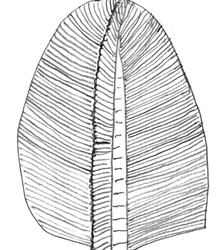
this is an Erniettamorph and we know basically nothing about these! The fossils were found in places where photosynthesis would not have been possible, and one type of these fossils has been found with the tubes completely covered and filled with sand, which makes the possibility of osmotic feeding from the surrounding water difficult as it would reduce the metabolically active volume. (https://www.pnas.org/doi/full/10.1073/pnas.0904836106)

Dickinsonia is a more studied animal. and it probably was an animal, due to cholesterol molecules found in fossils. Fossils range from millimetres to ~1.4 metres, and have near bilateral symmetry and rib-like segments. They were a mobile creature and ate microbial mats (trace fossils have been found which are most likely impressions from feeding) (https://doi.org/10.1017/S175569102300004X) A study from 2022 has suggested that they temporarily stuck themselves to substrate with mucus, which suggests a life in shallow waters (https://doi.org/10.1017/S0016756821000194)
support me on ko-fi?
#some of these articles are not freely available#so i might get the pdfs for people and drop them in a google drive if people would like#marine biology#ediacaran period#eddie in the ocean#dickinsonia#erniettamorph#frondose#fossils#paleontology#im on a paleo posting spree because this is what we r doing in lectures#i think ive had one singular lecture about modern animals (it was a cephalopods one)#oh wait no i had one on cnidaria and porifera ignore me#queue are in the ocean
49 notes
·
View notes
Text



Saturn's moon Titan could harbor life, but only a tiny amount, study finds
Despite its uniquely rich inventory of organic molecules, the moon may be able to support only a minuscule amount of biomass, a bioenergetic modeling study suggests.
Titan, Saturn's largest moon, is a strange, alien world. Covered in rivers and lakes of liquid methane, icy boulders and dunes of soot-like "sand," its topography has long fascinated scientists and invited speculation on whether lifeforms might lurk beneath the moon's thick, hazy atmosphere.
An international team of researchers co-led by Antonin Affholder at the U of A Department of Ecology and Evolutionary Biology and Peter Higgins at Harvard University's Department of Earth and Planetary sciences set out to develop a realistic scenario of what life on Titan might look like if it does exist, where it is most likely to occur and how much of it might be present.
"In our study, we focus on what makes Titan unique when compared to other icy moons: its plentiful organic content," said Affholder, who is a postdoctoral research associate.
Using bioenergetic modeling, the team found that Titan's subsurface ocean, estimated to be as deep as about 300 miles, may support lifeforms that consume organic material. Published in The Planetary Science Journal, their study concludes that while Titan could possibly harbor simple, microscopic life, it likely could support only a few pounds of biomass overall.
Often described as "Earthlike on the surface, ocean world on the inside," Titan is the target for future exploration via NASA's Dragonfly mission. While much has been speculated about possible scenarios that could give rise to living organisms on Titan based on the moon's abundant organic chemistry, previous estimates have suffered from what Affholder considers an overly simplistic approach.
"There has been this sense that because Titan has such abundant organics, there is no shortage of food sources that could sustain life," Affholder said. "We point out that not all of these organic molecules may constitute food sources, the ocean is really big, and there's limited exchange between the ocean and the surface, where all those organics are, so we argue for a more nuanced approach."
At the core of the research lies a "back-to-basics" approach that attempted to come up with a plausible scenario for life on Titan that assumed one of the simplest and most remarkable of all biological metabolic processes: fermentation. Familiar to Earthlings for its use in sourdough breadmaking, beer brewing and – less desirably – its role in spoiling forgotten leftovers, fermentation only requires organic molecules, but no "oxidant" such as oxygen, a crucial requirement for other metabolic processes, such as respiration.
"Fermentation probably evolved early in the history of Earth's life, and does not require us to open any door into unknown or speculative mechanisms that may or may not have happened on Titan," Affholder said, adding that life on Earth could have first emerged as feeding on organic molecules left over from Earth's formation.
"We asked, could similar microbes exist on Titan?" Affholder said. "If so, what potential does Titan's subsurface ocean have for a biosphere feeding off of the seemingly vast inventory of abiotic organic molecules synthesized in Titan's atmosphere, accumulating at its surface and present in the core?"
The researchers specifically focused on one organic molecule, glycine, the simplest of all known amino acids.
"We know that glycine was relatively abundant in any sort of primordial matter in the solar system," Affholder said. "When you look at asteroids, comets, the clouds of particles and gas from which stars and planets like our solar system form, we find glycine or its precursors in pretty much all those places."
However, computer simulations revealed that only a small fraction of Titan's organic material may be suitable for microbial consumption. Glycine-consuming microbes in Titan's ocean would depend on a steady supply of the amino acid from the surface, through the thick icy shell. Previous work by the same team had shown that meteorites impacting the ice could leave behind "melt pools" of liquid water, which then sink through the ice and deliver surface materials to the ocean.
"Our new study shows that this supply may only be sufficient to sustain a very small population of microbes weighing a total of only a few kilograms at most – equivalent to the mass of a small dog," Affholder said. "Such a tiny biosphere would average less than one cell per liter of water over Titan's entire vast ocean."
For a future mission to Titan, the odds of finding life – if it is indeed there – could be like looking for a needle in a haystack, unless Titan's potential for life is to be found elsewhere than in its surface organic content, the team suggests.
"We conclude that Titan's uniquely rich organic inventory may not in fact be available to play the role in the moon's habitability to the extent one might intuitively think," Affholder said.
TOP IMAGE: This composite image shows an infrared view of Titan from NASA's Cassini spacecraft, acquired during a high-altitude fly-by, 6,200 miles above the moon, on Nov. 13, 2015. The view features the parallel, dark, dune-filled regions named Fensal (to the north) and Aztlan (to the south). Credit NASA/JPL/University of Arizona/University of Idaho
CENTRE IMAGE: This artist's concept of a lake at the north pole of Saturn's moon Titan illustrates raised rims and rampartlike features as seen by NASA's Cassini spacecraft. Credit NASA/JPL-Caltech
LOWER IMAGE: Part of NASA’s New Frontiers Program, the Dragonfly mission is now scheduled to launch in 2028 and arrive on Saturn's moon Titan in 2034. Credit NASA/Johns Hopkins APL/Steve Gribben
3 notes
·
View notes
